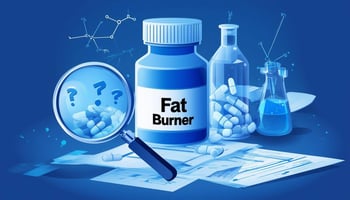New research findings have raised eyebrows: A certain dietary supplement is supposed to boost fat...
Do you really burn more fat in the "fat burning zone"?
Zone 2 training has become a real hot topic in recent years - not least thanks to popular podcasts and social media. It is celebrated as a miracle cure for burning fat. But is that really true? Or is there a misunderstanding behind the so-called "fat-burning zone"?
What is Zone 2 training anyway?
Zone 2 training describes moderate exercise at around 60-70% of your maximum heart rate. In this zone, your body prefers to use fat as an energy source instead of burning carbohydrates. This sounds logical at first: if more fat is used as fuel, you should also lose more body fat - right?
Why it's not that simple
Here's the mistake: just because your body uses more fat for energy during training does not automatically mean that you will lose more body fat. What matters is the total amount of calories you burn during a workout - not which energy source your body prefers.
The science behind fat burning
Studies have compared different forms of cardio training and found that All intensities can lead to a reduction in body fat - as long as the energy balance is right.
-
Zone 2 training burns more fat in percentage terms, but fewer calories overall, as it is a moderate workout.
-
High-intensity training primarily uses carbohydrates, but burns more calories per minute.
-
The key to fat loss is the total amount of calories burned - not the source of fat or carbohydrate.
What does this mean for your training?
Zone 2 training offers numerous benefits, such as improved aerobic endurance and more efficient fat metabolism function. But if your primary goal is fat loss, you should focus less on which "zone" you're training in and more on how many calories you're burning overall.
In short:
-
Zone 2 training makes sense for endurance and heart health.
-
If you want to lose fat, you should pay attention to the total calorie deficit.
-
Higher intensities can burn more calories in less time.
Whichever method you prefer, fat loss ultimately depends on your energy expenditure and diet, not on exercise intensity alone.
Sources:
-
Achten, R. & Jeukendrup, A. E. (2004). Optimizing fat oxidation through exercise and diet. International Journal of Sports Nutrition and Exercise Metabolism.
-
Brooks, G. A., et al. (2004). Exercise Physiology: Human Bioenergetics and Its Applications. McGraw Hill.
-
Romijn, J. A., et al. (1993). Regulation of endogenous fat and carbohydrate metabolism in relation to exercise intensity and duration. American Journal of Physiology.





Wir freuen uns über dein Kommentar: